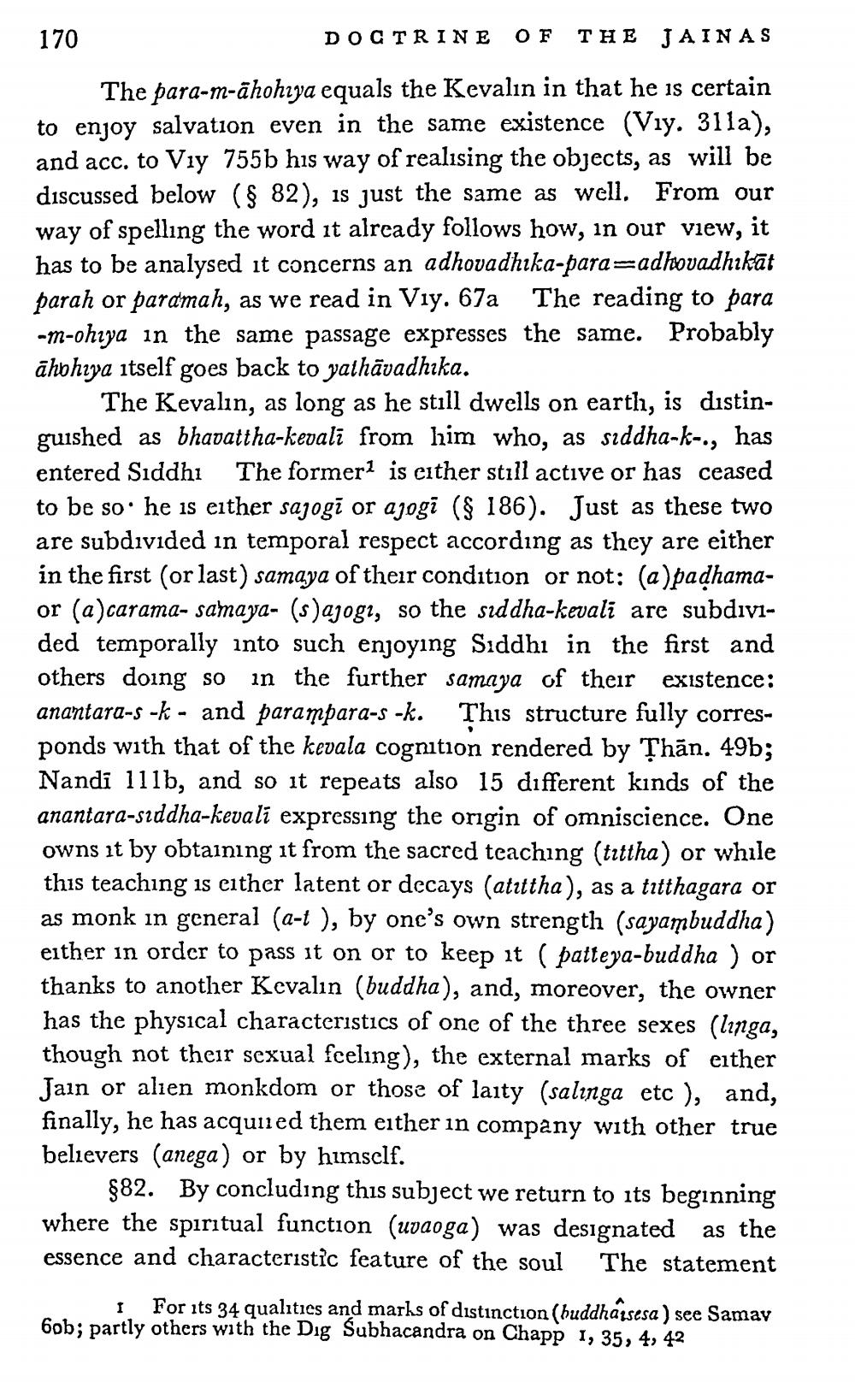________________
170
DOCTRINE OF THE JAINAS The para-m-āhohıya equals the Kevalın in that he is certain to enjoy salvation even in the same existence (Viy. 311a), and acc. to Vıy755b his way of realising the objects, as will be discussed below (82), is just the same as well. From our way of spelling the word it already follows how, in our view, it has to be analysed it concerns an adhovadhika-para=adhovadhikāt parah or paramah, as we read in Viy. 67a The reading to para -M-ohiya in the same passage expresses the same. Probably āhbhıya itself goes back to yathāvadhıka.
The Kevalın, as long as he still dwells on earth, is distinguished as bhavattha-kevali from him who, as siddha-k-., has entered Siddhi The former is either still active or has ceased to be so he is either sajogī or ajogi ($ 186). Just as these two are subdivided in temporal respect according as they are either in the first (or last) samaya of their condition or not: (a)padhamaor (a)carama- samaya- (s)ajogi, so the siddha-kevali are subdivided temporally into such enjoying Siddhi in the first and others doing so in the further samaya of their existence: anantara-s -k - and parampara-s -k. This structure fully corresponds with that of the kevala cognition rendered by Thān. 49b; Nandi 111b, and so it repeats also 15 different kinds of the anantara-sıddha-kevali expressing the origin of omniscience. One owns it by obtaining it from the sacred teaching (tittha) or while this teaching is either latent or decays (atittha), as a titthagara or as monk in general (a-t ), by one's own strength (sayambuddha) either in order to pass it on or to keep it ( patteya-buddha ) or thanks to another Kevalın (buddha), and, moreover, the owner has the physical characteristics of one of the three sexes (linga, though not their sexual fceling), the external marks of either Jain or alien monkdom or those of laity (salinga etc), and, finally, he has acquued them either in company with other true believers (anega) or by himself.
$82. By concluding this subject we return to its beginning where the spiritual function (uvaoga) was designated as the essence and characteristic feature of the soul The statement
1 For its 34 qualities and marks of distinction(huddhájsesa) see Samay 60b; partly others with the Dig Subhacandra on Chapp 1, 35, 4, 42




